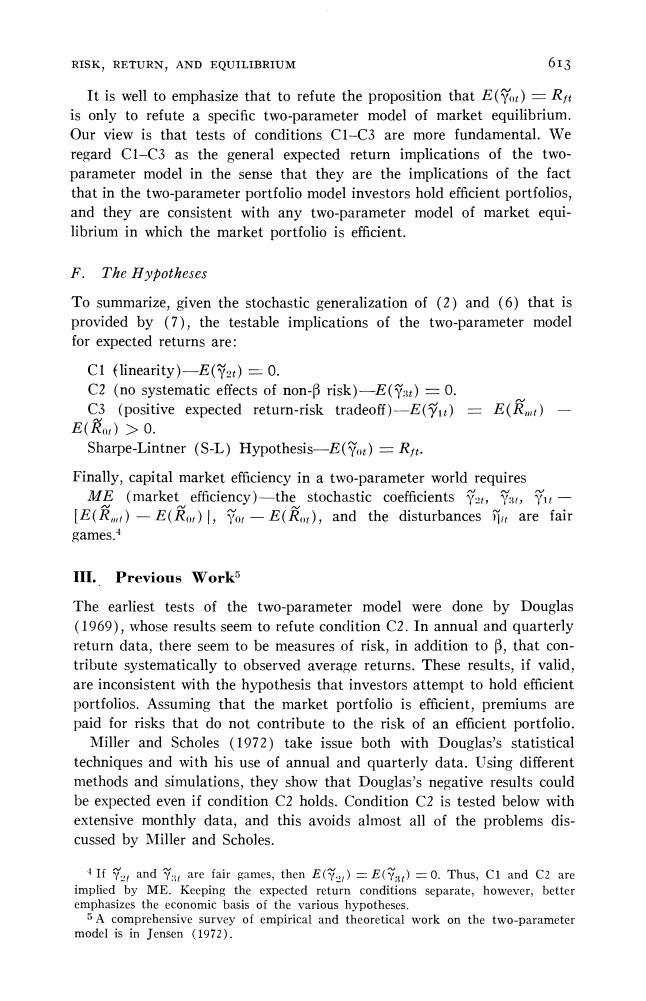正在加载图片...

RISK,RETURN,AND EQUILIBRIUM 613 It is well to emphasize that to refute the proposition that E(Yot)=Ryt is only to refute a specific two-parameter model of market equilibrium. Our view is that tests of conditions C1-C3 are more fundamental.We regard C1-C3 as the general expected return implications of the two- parameter model in the sense that they are the implications of the fact that in the two-parameter portfolio model investors hold efficient portfolios, and they are consistent with any two-parameter model of market equi- librium in which the market portfolio is efficient. F.The Hypotheses To summarize,given the stochastic generalization of (2)and (6)that is provided by (7),the testable implications of the two-parameter model for expected returns are: C1 (linearity)-E(Y2t)=0. C2 (no systematic effects of non-B risk)-E()=0. C3 (positive expected return-risk tradeoff)-E()=E()- E(驳r)>0. Sharpe-Lintner (S-L)Hypothesis-E(Yot)=Rst. Finally,capital market efficiency in a two-parameter world requires ME (market efficiency)-the stochastic coefficients,,- [E(R)-E(Ror)1,Yor-E(Rot),and the disturbances fit are fair games.4 III.Previous Work The earliest tests of the two-parameter model were done by Douglas (1969),whose results seem to refute condition C2.In annual and quarterly return data,there seem to be measures of risk,in addition to B,that con- tribute systematically to observed average returns.These results,if valid, are inconsistent with the hypothesis that investors attempt to hold efficient portfolios.Assuming that the market portfolio is efficient,premiums are paid for risks that do not contribute to the risk of an efficient portfolio Miller and Scholes (1972)take issue both with Douglas's statistical techniques and with his use of annual and quarterly data.Using different methods and simulations,they show that Douglas's negative results could be expected even if condition C2 holds.Condition C2 is tested below with extensive monthly data,and this avoids almost all of the problems dis- cussed by Miller and Scholes. 4 If and are fair games,then E()=E(Ya)=0.Thus,C1 and C2 are implied by ME.Keeping the expected return conditions separate,however,better emphasizes the economic basis of the various hypotheses. 5 A comprehensive survey of empirical and theoretical work on the two-parameter model is in Jensen (1972)